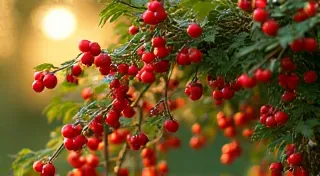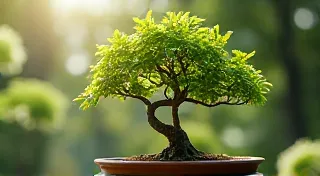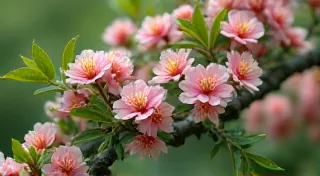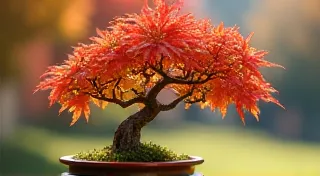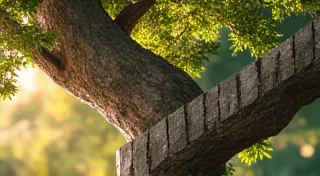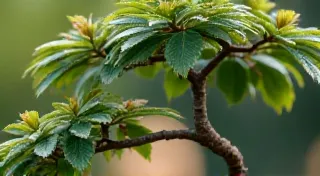Serissa Foetida Bonsai: Troubleshooting Common Problems
Serissa Foetida, also known as Snowrose or White Lilac, is a popular choice for bonsai enthusiasts. Its delicate white flowers and attractive foliage make it a beautiful addition to any collection. However, Serissa Foetida can be a bit temperamental and is notorious for presenting challenges. This guide addresses common problems faced by Serissa Foetida bonsai owners, providing solutions to keep your tree thriving. Many bonsai species share similar challenges, requiring attentive care and understanding of their specific needs. If you're relatively new to bonsai, starting with a beginner-friendly species like a Chinese Elm Bonsai can be a great way to build your skills and confidence before tackling more demanding varieties.
Understanding the "Snowrose" Personality
Before diving into troubleshooting, it's crucial to understand why Serissa Foetida can be tricky. It's sensitive to environmental changes and is easily stressed by improper watering, light, and humidity. Sudden shifts in these conditions often trigger leaf drop, a characteristic frustration for Snowrose owners. Like many deciduous bonsai, understanding the specific environment and timing is critical for health and vigor.
Common Problems and Solutions
1. Leaf Drop: The Most Frequent Complaint
Sudden or gradual leaf drop is the most common issue with Serissa Foetida bonsai. Here's a breakdown of possible causes and how to address them:
- Watering Issues: Inconsistent watering is a primary culprit. Let the soil surface dry slightly between waterings, but ensure the tree doesn't completely dry out. Overwatering leads to root rot, while underwatering stresses the tree.
- Environmental Changes: Serissa Foetida dislikes drastic changes. Moving the tree from one location to another, even a slightly different room, can trigger leaf drop.
- Low Humidity: Snowrose thrives in higher humidity levels. Dry air, especially during winter months with indoor heating, can cause leaves to drop.
- Temperature Fluctuations: Avoid exposing your Serissa Foetida to extreme temperatures.

Leaf drop can be devastating, but remember that careful observation and a proactive approach are key. A sudden change in climate or moving your tree can often be the culprit. Consider how this might affect other species in your collection, like a vibrant Azalea Bonsai, which similarly thrives on consistent conditions.
2. Root Rot: A Silent Killer
Root rot is a serious issue, often resulting from overwatering and poor drainage. It can be difficult to detect early on, but symptoms include wilting leaves, yellowing foliage, and stunted growth.
Prevention and Treatment:
- Proper Potting Mix: Use a well-draining bonsai potting mix. A mix of akadama, pumice, and lava rock is ideal.
- Repotting: Repot your Serissa Foetida every 1-2 years, especially if you suspect root rot. Gently remove the tree from its pot and inspect the roots. Remove any dark, mushy roots.
- Drainage: Ensure the pot has adequate drainage holes.
Root rot is a common issue across many bonsai types. Choosing the right potting mix is paramount. Often, the health of your bonsai is directly tied to the quality and drainage of the soil, just as it is with other species like a majestic Japanese Maple Bonsai.
3. Pests: Tiny Troubles
While not as common as other issues, Serissa Foetida can be susceptible to pests like spider mites, aphids, and scale.
Identification and Control:
- Spider Mites: Look for fine webbing on the undersides of leaves. Treat with insecticidal soap or neem oil.
- Aphids: These tiny, pear-shaped insects cluster on new growth. Wash them off with a strong stream of water or use insecticidal soap.
- Scale: These pests look like small bumps on the stems and leaves. Scrape them off manually or use horticultural oil.

Pest control is an essential aspect of bonsai care, and vigilance is key. Regularly inspecting your plants for signs of infestation can prevent significant damage. Knowing how to identify and treat common pests is a skill every bonsai enthusiast should cultivate.
4. Yellowing Leaves
Yellowing leaves can indicate several problems. Nutrient deficiencies (especially iron deficiency) or a build-up of salts in the soil can cause this.
Solution: Flush the soil thoroughly with water to remove any accumulated salts. Consider using a bonsai fertilizer diluted to half strength. If yellowing persists, check the soil pH. Snowrose prefers slightly acidic soil.
Nutrient deficiencies and salt buildup can impact a bonsai's health and appearance. Understanding soil pH is crucial for optimal nutrient uptake. Similar issues arise in other species, and adjusting the soil’s composition and nutrient balance is often necessary for vibrant growth.
5. Lack of Flowers
While Snowrose is known for its flowers, sometimes they simply don't appear. This can be due to insufficient sunlight or improper pruning.
Solution: Ensure your Serissa Foetida receives at least 4-6 hours of direct sunlight daily. Prune lightly in early spring to encourage flowering. Also, ensure the tree is mature enough to flower - young trees may not produce blooms.

Encouraging flowering requires understanding the tree’s needs and providing the right conditions. Sunlight and proper pruning techniques play a crucial role. Sometimes, achieving that perfect bloom requires patience and a deep understanding of the plant’s life cycle. Many species need specific timing and conditions to flower, even those as adaptable as a Korean Hornbeam Bonsai.
Beyond the Basics: Advanced Serissa Foetida Care
Once you’re comfortable with the basics, you can explore more advanced techniques to enhance your Serissa Foetida’s health and appearance. This includes understanding the tree’s water requirements in different seasons, experimenting with different fertilization schedules, and mastering various pruning techniques to shape the tree's form.
Watering Deeply: Instead of frequent shallow waterings, opt for deep watering less often. This encourages the roots to grow deeper into the soil, making the tree more resilient.
Humidity Management: Consistent humidity is essential. Using a humidity tray or humidifier can help maintain optimal moisture levels, especially during dry periods. Covering the tree with a plastic bag for a few hours each week can simulate a humid environment.
Fertilization: Snowrose responds well to regular fertilization during the growing season (spring and summer). Use a balanced bonsai fertilizer diluted to half strength. Reduce or eliminate fertilization during the dormant season (fall and winter).
Repotting Schedule: Repotting should be done every 1-2 years. This provides fresh soil, allows for root pruning, and ensures the tree has adequate space to grow. During repotting, carefully inspect the roots and remove any that are circling the pot or appear unhealthy.
Conclusion
Troubleshooting a Serissa Foetida bonsai can be challenging, but with careful observation and consistent care, you can overcome common problems and enjoy the beauty of this unique bonsai species. Pay close attention to its environment and respond promptly to any signs of distress. Remember that bonsai cultivation is a continuous learning process. Each tree is unique, and what works for one may not work for another. Experimentation and adaptation are key to success.
